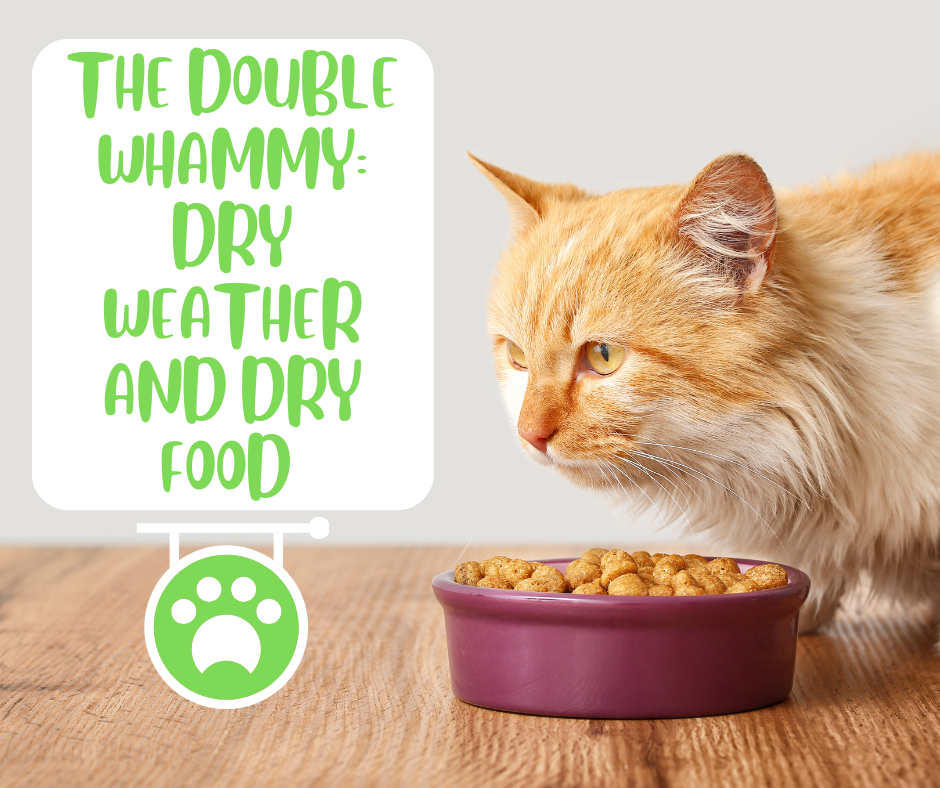
I often emphasize the crucial role of diet in your pet’s overall health. Today, I want to focus on something many pet parents might overlook: the impact of dry food on our furry friends, especially during dry weather.
.
Understanding Dry Food
.
Let’s break it down. Most fresh foods—think apples, chicken, or broccoli—contain about 65% water. Even blood, which is around 90% water, shows how vital hydration is in the foods we consume. In contrast, dry pet food, or kibble, has had nearly all its moisture stripped away, leaving it with less than 2% water content. This lack of moisture is what makes kibble shelf-stable, allowing it to sit on store shelves without spoiling for… months.
.
This ultra-dry, ultra-processed food can create significant issues for our pets. To understand why and how, let’s look first at how dogs and cats manage to digest this dry food.
They compensate by drinking lots of water. In fact, many kibble brands include high levels of salt to encourage pets to drink more. However, this constant need for additional hydration can lead to internal dryness, manifesting in various ways:
.
- Dandruff: Flaky skin can become more pronounced.
- Dry Feet: Rough, cracked pads on paws may develop.
- Scruffy Noses: Pets may have dry, chapped noses.
.
The Double Whammy of Dry Weather
.
As we transition into colder months in the northern hemisphere, many of us move indoors and turn on heating systems. This forces air can significantly reduce indoor humidity levels. The result? Your pet’s dry skin issues may worsen. You might notice:
.
- Increased dandruff
- Unpleasant odors
- A weird combination of greasy and dry patches on their skin a the same time.
.
When these symptoms emerge, many pet parents turn to quick fixes like fish oil which sometimes works, or corn oil, which is no better than the kibble and highly inflammatory. Both fall short of addressing the root cause.
.
Looking for Solutions
.
So, what can you do? The key is to focus on hydration from the inside out. Instead of relying solely on dry kibble, consider incorporating:
.
- Fresh Foods: Adding moisture-rich fruits and vegetables to your pet’s diet can help.
- Herbal Remedies: Consult with a holistic veterinarian for tailored herbal solutions that support your pet’s skin and coat health
.
If you’re unsure where to start, don’t hesitate to reach out for professional guidance. Together, we can ensure your pet thrives all year round!
.
Still seeing patients in Clearwater, Tampa, and virtually.
